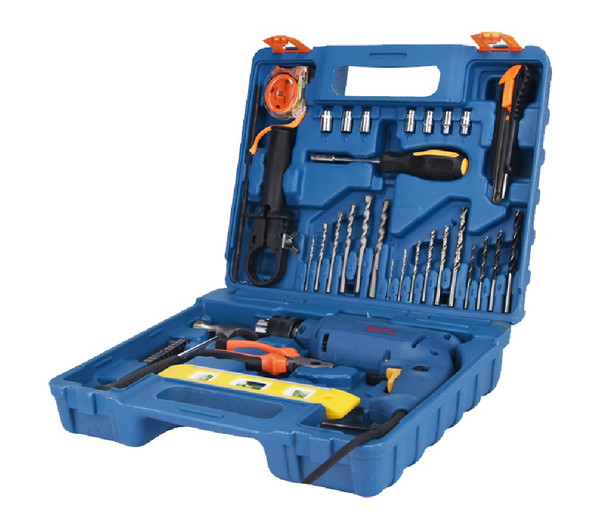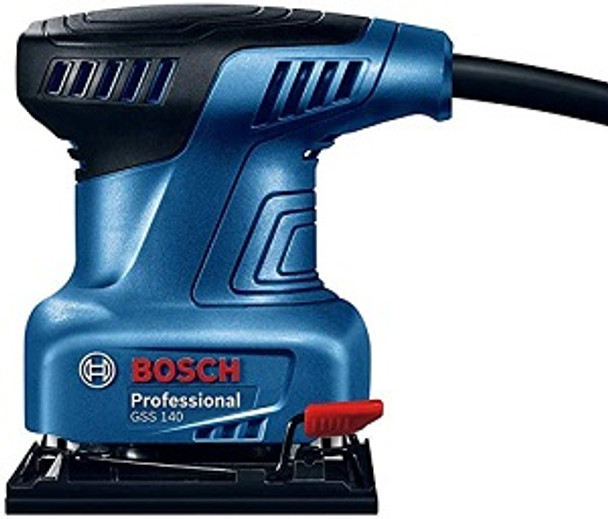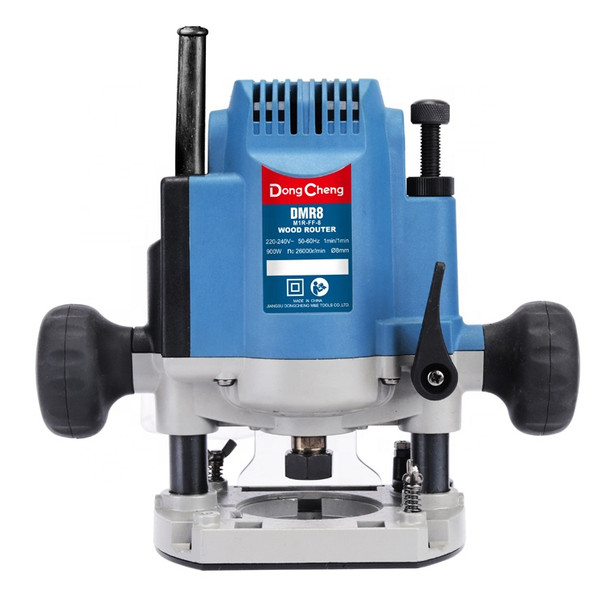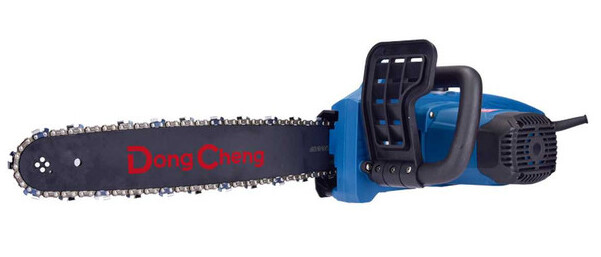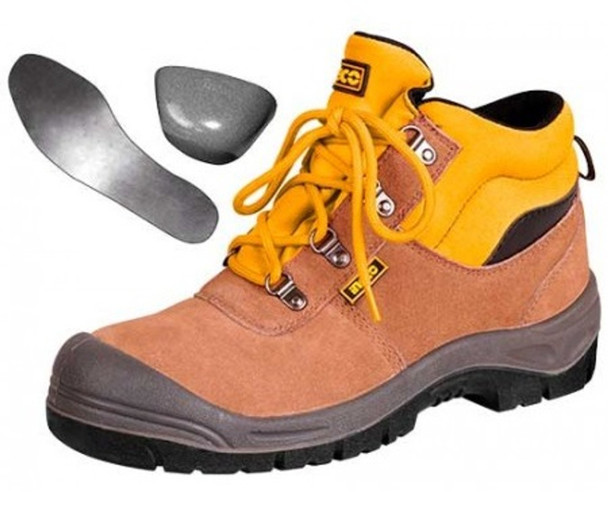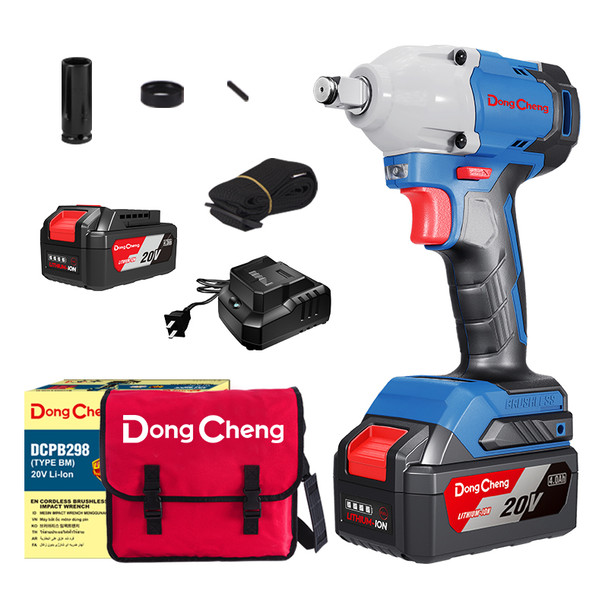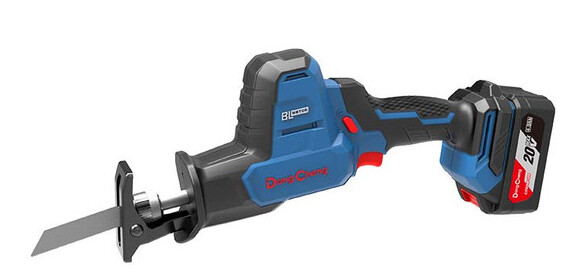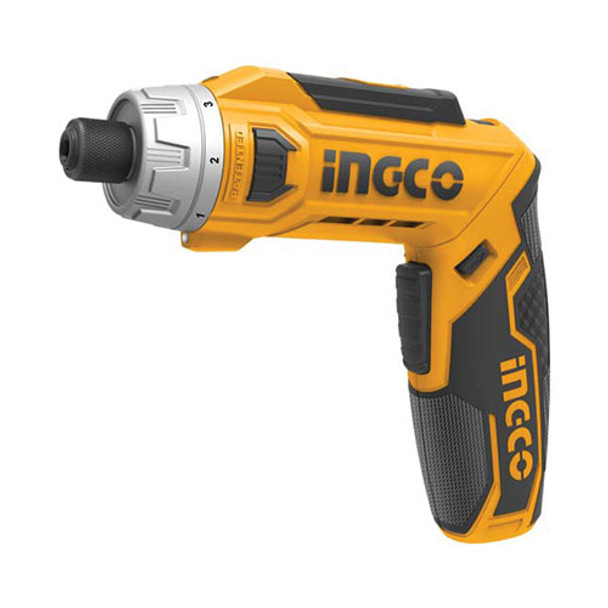The Practical Applications of Power Tools: A Comprehensive Guide
In the realms of construction and do-it-yourself projects, power tools serve as the architects of innovation and efficiency. In construction, these tools wield unparalleled precision, driving the creation of sturdy structures and intricate designs alike. Woodworking flourishes under the influence of power saws and routers, transforming raw materials into bespoke creations. The manufacturing sector relies on power tools for precise cutting, shaping, and assembly, ensuring the production of high-quality goods. Even in the realm of healthcare, where precision is paramount, power tools find application in crafting prosthetics and medical devices. From automotive repair to electronic assembly, the practical applications of power tools transcend boundaries, consistently delivering efficiency, accuracy, and innovation across diverse industries. In each whir and hum, power tools mark not just the progress of a task but the evolution of industries worldwide. To learn more about Power tools names and uses click here.
DongCheng Electrical Impact Drill (Tool Kit) DZJ 04-13
This guide is a key to unlocking the true potential of these tools, delving into their practical applications and offering solutions to common challenges faced in the dynamic fields of construction and DIY endeavors. From drilling and sawing to crafting and remodeling, we'll explore the diverse applications of power tools, providing insights that empower you to overcome challenges and elevate your projects to new heights. Join us on this journey, where every buzz and whir of a power tool becomes a solution in the making.
Essential Power Tools and Their Functions
Power tools are devices that use electricity, compressed air, or batteries to perform various tasks. They are designed to make work easier, faster, and more efficient. Power tools can be used for a variety of purposes, such as drilling, cutting, fastening, sanding, and more. In this section, we will discuss some of the most essential power tools and their functions.
A. Drill: Versatility in creating holes of various sizes
A drill is a power tool that uses a rotating bit to create holes in different materials, such as wood, metal, plastic, or concrete. Drills can be corded or cordless, and they come in various sizes and shapes. Drills can also be fitted with different types of bits, such as twist, spade, hole saw, masonry, and more, to suit different applications. Drills are versatile tools that can be used for many purposes, such as installing screws, anchors, or bolts, making furniture, hanging pictures, or wiring electrical circuits.
B. Saw: Precision in cutting different materials
A saw is a power tool that uses a blade, chain, or wire to cut through different materials, such as wood, metal, plastic, or stone. Saws can be corded or cordless, and they come in various types and sizes. Some of the common types of saws are circular saw, jigsaw, reciprocating saw, band saw, table saw, and miter saw. Saws can also be equipped with different blades, such as rip, crosscut, fine, or coarse, to suit different materials and cuts. Saws are precise tools that can be used for many purposes, such as trimming, shaping, or splitting materials, making furniture, building structures, or crafting artworks.
C. Power Screwdriver: Efficient fastening with ease
A power screwdriver is a power tool that uses a rotating bit to drive screws into different materials, such as wood, metal, plastic, or drywall. Power screwdrivers can be corded or cordless, and they come in various shapes and sizes. Power screwdrivers can also be fitted with different bits, such as Phillips, flat, hex, or Torx, to match different types of screws. Power screwdrivers are efficient tools that can be used for many purposes, such as assembling, disassembling, or repairing furniture, appliances, or electronics, installing or removing hardware, or securing or loosening fasteners.
D. Sander: Smoothing surfaces for a professional finish
A sander is a power tool that uses a sandpaper or a disc to smooth or polish surfaces of different materials, such as wood, metal, plastic, or paint. Sanders can be corded or cordless, and they come in various types and sizes. Some of the common types of sanders are belt sander, orbital sander, random orbit sander, detail sander, and disc sander. Sanders can also be used with different grades of sandpaper, such as coarse, medium, or fine, to achieve different levels of smoothness. Sanders are smoothing tools that can be used for many purposes, such as preparing surfaces for painting, staining, or varnishing, removing rust, paint, or scratches, or creating a smooth and professional finish.
These are some of the essential power tools and their functions. By using these tools, you can perform various tasks with ease, speed, and accuracy. However, you should also be careful when using power tools, as they can be dangerous if not handled properly. Always follow the safety instructions, wear protective gear, and maintain your tools regularly. Power tools are great assets for any DIY enthusiast, hobbyist, or professional. With power tools, you can unleash your creativity and productivity, and achieve amazing results.
Bosch GSS 140 Professional orbital sander
Bosch GSS 140 Professional orbital sander
Woodworking Applications
Woodworking is the art and craft of creating objects from wood, such as furniture, cabinets, sculptures, or toys. It can be a hobby, a profession, or a passion. Woodworking requires skill, creativity, and patience. Woodworking also requires the use of power tools, which can help you achieve various tasks with ease, speed, and accuracy. In this section, we will discuss some of the woodworking applications that you can do with power tools.
Crafting with precision using power saws
Power saws are essential tools for woodworking, as they allow you to cut wood into different shapes and sizes. Power saws can also help you craft with precision, as they can make accurate and smooth cuts. You can use power saws to create various woodworking projects, such as:
- Furniture: You can use power saws to cut wood into planks, boards, or panels, which you can then assemble into furniture, such as tables, chairs, shelves, or beds. You can also use power saws to cut wood into curves, angles, or joints, which can add style and functionality to your furniture.
- Cabinets: You can use power saws to cut wood into frames, doors, drawers, or shelves, which you can then assemble into cabinets, such as kitchen cabinets, bathroom cabinets, or storage cabinets. You can also use power saws to cut wood into moldings, trims, or handles, which can enhance the appearance and quality of your cabinets.
- Sculptures: You can use power saws to cut wood into blocks, slabs, or chunks, which you can then carve into sculptures, such as statues, busts, or figurines. You can also use power saws to cut wood into intricate shapes, patterns, or details, which can add realism and beauty to your sculptures.
Creating intricate designs with routers
Routers are power tools that use a spinning bit to cut, shape, or carve wood. Routers can also help you create intricate designs, as they can make precise and detailed cuts. You can use routers to create various woodworking projects, such as:
- Signs: You can use routers to cut wood into letters, numbers, symbols, or logos, which you can then use to make signs, such as nameplates, plaques, or banners. You can also use routers to cut wood into decorative edges, borders, or frames, which can add flair and elegance to your signs.
- Inlays: You can use routers to cut wood into recesses, grooves, or slots, which you can then fill with different materials, such as wood, metal, stone, or resin, to make inlays. Inlays are decorative designs that are embedded into wood, such as marquetry, parquetry, or intarsia. You can also use routers to cut wood into shapes, motifs, or images, which you can then use to make inlays.
- Carvings: You can use routers to cut wood into reliefs, contours, or textures, which you can then use to make carvings. Carvings are artistic designs that are engraved into wood, such as bas-relief, high-relief, or chip carving. You can also use routers to cut wood into curves, swirls, or spirals, which you can then use to make carvings.
DongCheng Wood Router 900W 8MM DMR8
Enhancing joinery with power drills
Power drills are power tools that use a rotating bit to create holes in wood. Power drills can also help you enhance joinery, as they can make strong and secure connections. You can use power drills to create various woodworking projects, such as:
- Frames: You can use power drills to create holes in wood, which you can then use to join wood pieces together with screws, nails, or dowels, to make frames, such as picture frames, window frames, or door frames. You can also use power drills to create holes in wood, which you can then use to insert hinges, latches, or knobs, to make frames.
- Boxes: You can use power drills to create holes in wood, which you can then use to join wood pieces together with screws, nails, or dowels, to make boxes, such as jewelry boxes, tool boxes, or toy boxes. You can also use power drills to create holes in wood, which you can then use to attach lids, locks, or handles, to make boxes.
- Joints: You can use power drills to create holes in wood, which you can then use to join wood pieces together with different types of joints, such as butt joints, lap joints, miter joints, dovetail joints, or mortise and tenon joints. Joints are ways of connecting wood pieces together, such as corners, angles, or intersections. You can also use power drills to create holes in wood, which you can then use to reinforce joints with screws, nails, dowels, or biscuits, to make joints.
These are some of the woodworking applications that you can do with power tools. By using power tools, you can craft with precision, create intricate designs, and enhance joinery. However, you should also be careful when using power tools, as they can be dangerous if not handled properly.
Construction and Renovation Uses
Power tools are not only useful for woodworking, but also for construction and renovation. Construction and renovation include activities such as building, repairing, or improving structures, such as houses, buildings, bridges, or roads. Construction and renovation require skill, strength, and endurance. Construction and renovation also require the use of power tools, which can help you achieve various tasks with ease, speed, and accuracy. In this section, we will discuss some of the construction and renovation uses that you can do with power tools.
Efficient framing with power nailers
Power nailers are power tools that use compressed air, gas, or electricity to drive nails into different materials, such as wood, metal, or concrete. Power nailers can be corded or cordless, and they come in various types and sizes. Some of the common types of power nailers are framing nailer, finish nailer, brad nailer, and roofing nailer. Power nailers can also be used with different sizes and lengths of nails, such as 16d, 8d, or 6d, to suit different applications. Power nailers are efficient tools that can help you with framing, which is the process of creating the skeleton or structure of a building or a room. You can use power nailers to create various construction and renovation projects, such as:
- Walls: You can use power nailers to create walls, which are the vertical structures that divide or enclose a space. You can use power nailers to join wood studs, plates, and headers, which are the components of a wall frame. You can also use power nailers to attach drywall, paneling, or siding, which are the materials that cover a wall frame.
- Floors: You can use power nailers to create floors, which are the horizontal structures that support or separate levels. You can use power nailers to join wood joists, beams, and subfloors, which are the components of a floor frame. You can also use power nailers to attach hardwood, laminate, or tile, which are the materials that cover a floor frame.
- Roofs: You can use power nailers to create roofs, which are the uppermost structures that protect or cover a building or a room. You can use power nailers to join wood rafters, trusses, and sheathing, which are the components of a roof frame. You can also use power nailers to attach shingles, metal, or slate, which are the materials that cover a roof frame.
Impact of power drills in construction tasks
Power drills are power tools that use a rotating bit to create holes in different materials, such as wood, metal, plastic, or concrete. They can be corded or cordless, and they come in various sizes and shapes. Power drills can also be fitted with different types of bits, such as twist, spade, hole saw, masonry, and more, to suit different applications. Power drills are impactful tools that can help you with various construction tasks, such as:
- Anchoring: You can use power drills to create holes in concrete, brick, or stone, which you can then use to insert anchors, bolts, or screws, to secure or attach objects, such as shelves, cabinets, or frames, to a wall or a floor.
- Wiring: You can use power drills to create holes in wood, metal, or plastic, which you can then use to run wires, cables, or pipes, to connect or install electrical, plumbing, or communication systems, such as lights, outlets, switches, faucets, or phones, in a building or a room.
- Drilling: You can use power drills to create holes in wood, metal, or plastic, which you can then use to join or fasten objects, such as boards, panels, or brackets, to each other or to a structure, using screws, nails, or dowels, to create or repair furniture, appliances, or fixtures, in a building or a room.
Demolition and remodeling with reciprocating saws
Reciprocating saws are power tools that use a blade that moves back and forth to cut through different materials, such as wood, metal, plastic, or drywall. Reciprocating saws can be corded or cordless, and they come in various types and sizes. Reciprocating saws can also be equipped with different blades, such as wood, metal, or demolition, to suit different materials and cuts. Reciprocating saws are powerful tools that can help you with demolition and remodeling, which are the processes of tearing down or changing the structure or appearance of a building or a room. You can use reciprocating saws to create various construction and renovation projects, such as:
- Demolition: You can use reciprocating saws to cut through walls, floors, roofs, or frames, which you can then remove or dispose of, to clear or change the space, layout, or design of a building or a room.
- Remodeling: You can use reciprocating saws to cut through drywall, paneling, siding, or flooring, which you can then replace or update, to improve or enhance the look, feel, or function of a building or a room.
- Repairing: You can use reciprocating saws to cut through damaged or rotten wood, metal, or plastic, which you can then fix or restore, to maintain or extend the life, quality, or performance of a building or a room.
These are some of the construction and renovation uses that you can do with power tools. By using power tools, you can achieve efficient framing, impactful drilling, and powerful cutting.
DongCheng-ELECTRIC CHAIN SAW-DML05-405
DIY Home Improvement Projects
Power tools are not only useful for woodworking, construction, and renovation, but also for DIY home improvement projects. DIY home improvement projects can be fun, rewarding, and cost-effective. They also require the use of power tools, which can help you achieve various tasks with ease, speed, and accuracy. In this section, we will discuss some of the DIY home improvement projects that you can do with power tools.
Power tools for basic repairs and maintenance
Power tools can help you with basic repairs and maintenance, which are the processes of fixing or keeping your home in good condition. Basic repairs and maintenance can prevent or solve problems, such as leaks, cracks, squeaks, or malfunctions, that may affect your home’s functionality, safety, or appearance. You can use power tools to perform various basic repairs and maintenance tasks, such as:
- Plumbing: You can use power tools to repair or maintain your plumbing system, which is the network of pipes, valves, faucets, and fixtures that supply or drain water in your home. You can use power tools, such as power drills, wrenches, or pliers, to tighten or loosen connections, replace or install parts, or unclog or clean drains.
- Electrical: You can use power tools to repair or maintain your electrical system, which is the network of wires, outlets, switches, and devices that supply or use electricity in your home. You can use power tools, such as power drills, screwdrivers, or testers, to attach or detach wires, replace or install parts, or check or fix circuits.
- Carpentry: You can use power tools to repair or maintain your carpentry, which is the craft of working with wood in your home. You can use power tools, such as power saws, nailers, or sanders, to cut or join wood, replace or install parts, or smooth or polish surfaces.
Enhancing efficiency in painting and finishing
Power tools can help you with painting and finishing, which are the processes of applying or removing colors or coatings on your home’s surfaces. Painting and finishing can improve or change your home’s look, feel, or protection. You can use power tools to perform various painting and finishing tasks, such as:
- Painting: You can use power tools to paint your home’s walls, ceilings, doors, or windows, which are the surfaces that define or decorate your home’s space. You can use power tools, such as power sprayers, rollers, or brushes, to apply or remove paint, which is the liquid or solid substance that adds or changes color on your home’s surfaces.
- Finishing: You can use power tools to finish your home’s floors, cabinets, or furniture, which are the surfaces that support or store your home’s items. You can use power tools, such as power sanders, polishers, or buffers, to apply or remove finish, which is the liquid or solid substance that adds or changes shine, texture, or protection on your home’s surfaces.
Creating custom furniture with versatile tools
Power tools can help you with creating custom furniture, which is the process of making or modifying your own furniture for your home. Custom furniture can suit your personal taste, style, or needs. Custom furniture can also save you money, space, or time. You can use power tools to perform various custom furniture tasks, such as:
- Making: You can use power tools to make your own furniture from scratch, which is the process of creating furniture from raw materials, such as wood, metal, or plastic. You can use power tools, such as power saws, drills, or nailers, to cut, shape, or join materials, to create furniture, such as tables, chairs, shelves, or beds.
- Modifying: You can use power tools to modify your existing furniture, which is the process of changing or improving furniture that you already have, such as by repairing, restoring, or repurposing. You can use power tools, such as power sanders, routers, or screwdrivers, to smooth, carve, or fasten parts, to modify furniture, such as cabinets, dressers, or desks.
Safety Boot SSH02S1P 45 INGCO
Safety Practices and Guidelines
Power tools are amazing devices that can help you with various tasks and projects, but they can also be dangerous if not used properly. Power tools can cause injuries, such as cuts, burns, shocks, or fractures, if you are not careful or aware of the risks. They can also damage your property, such as walls, floors, or furniture, if you are not skilled or attentive. Therefore, it is important to follow safety practices and guidelines when using power tools, to protect yourself, others, and your environment.
Importance of safety when using power tools
Safety is the state of being free from harm or danger. Safety is important when using power tools, because power tools can pose various hazards, such as:
- Mechanical hazards: Power tools can have moving parts, such as blades, chains, or wires, that can cut, pinch, or strike you or your clothing, if you are not careful or wearing proper protective gear.
- Electrical hazards: Power tools can use electricity, which can shock, burn, or electrocute you or your equipment, if you are not careful or using proper electrical safety measures.
- Thermal hazards: Power tools can generate heat, which can burn, scald, or ignite you or your materials, if you are not careful or using proper thermal safety measures.
- Chemical hazards: Power tools can use or produce chemicals, such as fuels, oils, or paints, that can poison, irritate, or explode you or your environment, if you are not careful or using proper chemical safety measures.
- Noise hazards: Power tools can produce noise, which can damage your hearing, if you are not careful or wearing proper hearing protection.
Protective gear and precautions for various tools
Protective gear is the equipment or clothing that you wear or use to protect yourself from hazards when using power tools. Protective gear can include:
- Eye protection: Eye protection is the gear that you wear to protect your eyes from flying particles, dust, sparks, or radiation, when using power tools. Eye protection can include safety glasses, goggles, or shields.
- Ear protection: Ear protection is the gear that you wear to protect your ears from loud noise, when using power tools. Ear protection can include ear plugs, ear muffs, or headphones.
- Hand protection: Hand protection is the gear that you wear to protect your hands from cuts, burns, shocks, or vibrations, when using power tools. Hand protection can include gloves, mittens, or pads.
- Foot protection: Foot protection is the gear that you wear to protect your feet from falling objects, punctures, or slips, when using power tools. Foot protection can include boots, shoes, or socks.
- Body protection: Body protection is the gear that you wear to protect your body from impacts, abrasions, or heat, when using power tools. Body protection can include helmets, hats, masks, jackets, aprons, or pants.
Precautions are the actions or measures that you take to prevent or reduce hazards when using power tools. Precautions can include:
- Reading and following the instructions, warnings, and labels of the power tools and their accessories, before using them.
- Inspecting and maintaining the power tools and their accessories, before and after using them, to ensure that they are in good working condition and free from defects or damages.
- Choosing and using the right power tools and their accessories, for the right tasks and materials, to ensure that they are suitable and compatible.
- Wearing and using the appropriate protective gear, for the specific power tools and their hazards, to ensure that they are effective and comfortable.
- Working in a safe and clean environment, with adequate lighting, ventilation, and space, to ensure that there are no obstacles, distractions, or interferences.
- Operating the power tools with care and attention, following the proper techniques and procedures, to ensure that they are controlled and stable.
- Stopping and unplugging the power tools, when not in use or when changing accessories, to ensure that they are not accidentally activated or damaged.
- Reporting and seeking help, in case of any problems, accidents, or emergencies, to ensure that they are resolved or treated as soon as possible.
DongCheng Cordless Brushless Impact Wrench 16 mm 20V 4A DCPB298BM
Safe handling and storage practices
Safe handling and storage practices are the methods or ways that you use to handle and store your power tools and their accessories, to ensure that they are safe and secure. Safe handling and storage practices can include:
- Carrying and transporting the power tools and their accessories, with care and caution, using the proper handles, cases, or containers, to prevent dropping, bumping, or losing them.
- Cleaning and drying the power tools and their accessories, after using them, to remove any dirt, dust, or moisture, that may affect their performance or durability.
- Sharpening and lubricating the power tools and their accessories, as needed, to maintain their sharpness and smoothness, that may affect their efficiency or quality.
- Labeling and organizing the power tools and their accessories, according to their types, sizes, or functions, to make them easy to identify and locate.
- Storing the power tools and their accessories, in a safe and dry place, away from children, pets, or unauthorized persons, to prevent theft, damage, or misuse.
These are some of the safety practices and guidelines that you should follow when using power tools. By following these practices and guidelines, you can ensure your safety, as well as the safety of others and your environment, when using power tools. Enabling you enjoy the benefits and advantages of power tools, without worrying about the risks and disadvantages.
Upgrading Your Toolkit: Latest Power Tool Innovations
Power tools are constantly evolving and improving, thanks to the advances in technology and innovation. Power tools are becoming more powerful, efficient, convenient, and versatile, to meet the needs and expectations of users. Power tools are also becoming more intelligent, connected, and adaptable, to offer more features and functions. In this section, we will discuss some of the latest power tool innovations that you can consider upgrading your toolkit with.
Overview of recent advancements in power tool technology
Power tool technology is the science and engineering that goes into designing, developing, and producing power tools and their accessories. Power tool technology is influenced by various factors, such as market demand, user feedback, industry standards, and research and development. Power tool technology is also influenced by other fields of technology, such as electronics, robotics, artificial intelligence, and internet of things. Some of the recent advancements in power tool technology are:
- Brushless motors: Brushless motors are motors that use magnets and electronic controllers, instead of brushes and commutators, to power the power tools. Brushless motors are more efficient, durable, and powerful, than brushed motors, as they reduce friction, heat, and wear, and increase speed, torque, and performance.
- Lithium-ion batteries: Lithium-ion batteries are batteries that use lithium and other elements, instead of nickel and cadmium, to store and deliver electricity to the power tools. Lithium-ion batteries are more efficient, reliable, and eco-friendly, than nickel-cadmium batteries, as they have higher capacity, longer life, and lower memory effect, and produce less waste and pollution.
- Smart sensors: Smart sensors are devices that use microchips and software, to monitor and measure various aspects of the power tools, such as speed, temperature, vibration, or pressure. Smart sensors are more intelligent, responsive, and adaptable, than conventional sensors, as they can adjust, optimize, or protect the power tools, based on the feedback or data they receive.
Upgrading to smart and cordless options
Smart and cordless options are the types of power tools that use wireless technology, such as Bluetooth, Wi-Fi, or radio frequency, to communicate and operate, without the need of cords, wires, or plugs. Smart and cordless options are more convenient, flexible, and versatile, than corded options, as they eliminate the hassle, limitation, and risk of cords, wires, or plugs, and allow more mobility, freedom, and functionality. You can upgrade to smart and cordless options, such as:
- Smart power tools: Smart power tools are power tools that use wireless technology, to connect and interact with other devices, such as smartphones, tablets, or computers, via apps or software. Smart power tools are more advanced, customizable, and interactive, than regular power tools, as they can offer more features and functions, such as remote control, diagnostics, tracking, or alerts.
- Cordless power tools: Cordless power tools are power tools that use wireless technology, to run on batteries, instead of cords, wires, or plugs. Cordless power tools are more portable, compact, and lightweight, than corded power tools, as they can be used anywhere, anytime, and by anyone, without the need of power outlets, extension cords, or generators.
Evaluating the benefits of new features
New features are the additional or improved characteristics or capabilities that the latest power tool innovations offer, compared to the previous or existing versions. New features are designed to enhance the performance, quality, or satisfaction of the power tools and their users. New features can also provide solutions, benefits, or advantages, to the challenges, problems, or disadvantages, that the power tools and their users may face. You can evaluate the benefits of new features, such as:
- LED lights: LED lights are lights that use light-emitting diodes, instead of incandescent bulbs, to illuminate the power tools or their work areas. LED lights are more beneficial, than incandescent lights, as they provide brighter, clearer, and more accurate lighting, and consume less energy, and last longer.
- Variable speed: Variable speed is the feature that allows the power tools to adjust their speed, according to the type, size, or hardness of the material or task. Variable speed is more beneficial, than fixed speed, as it provides more control, precision, and versatility, and prevents damage, waste, or errors.
- Anti-vibration: Anti-vibration is the feature that reduces or eliminates the vibration or shaking of the power tools, caused by their movement or operation. Anti-vibration is more beneficial, than vibration, as it provides more comfort, stability, and safety, and prevents fatigue, strain, or injury.
These are some of the latest power tool innovations that you can consider upgrading your toolkit with. By upgrading your toolkit, you can enjoy the benefits and advantages of the new technology, features, and functions, that the power tools offer. You can also improve your skills, productivity, and results, when using the power tools. Therefore, it is important to keep up with the latest power tool innovations, to upgrade your toolkit.
DongCheng Cordless brushless reciprocating saw DCJF22 FK
Tips for Efficient Power Tool Use
Proper maintenance to ensure longevity
Proper maintenance is the process of keeping your power tools and their accessories in good working condition and free from defects or damages. Proper maintenance can ensure the longevity of your power tools, which is the duration or lifespan of your power tools and their performance or durability. Proper maintenance can also prevent or minimize problems, such as malfunctions, breakdowns, or accidents, that may affect your power tools and their functionality, safety, or appearance. You can perform proper maintenance by:
- Reading and following the instructions, warnings, and labels of the power tools and their accessories, before and after using them, to learn how to use, care, and store them correctly and safely.
- Inspecting and testing the power tools and their accessories, before and after using them, to check if they are in good working condition and free from defects or damages, such as cracks, leaks, or loose parts.
- Cleaning and drying the power tools and their accessories, after using them, to remove any dirt, dust, or moisture, that may affect their performance or durability, or cause corrosion, rust, or mold.
- Sharpening and lubricating the power tools and their accessories, as needed, to maintain their sharpness and smoothness, that may affect their efficiency or quality, or cause friction, heat, or wear.
- Replacing and repairing the power tools and their accessories, as needed, to fix any defects or damages, that may affect their functionality, safety, or appearance, or cause further problems or losses.
Choosing the right tool for specific tasks
Choosing the right tool is the process of selecting the most suitable and compatible power tool and its accessory for a specific task or material. Choosing the right tool can ensure the effectiveness of your power tool, which is the degree or level of your power tool and its performance or quality. Choosing the right tool can also prevent or reduce waste, damage, or errors, that may affect your task or material and its outcome or result. You can choose the right tool by:
- Knowing and understanding the purpose, requirement, and specification of your task or material, such as the type, size, or hardness, to determine what kind of power tool and its accessory you need, such as the power, speed, or size.
- Comparing and evaluating the features, functions, and benefits of different power tools and their accessories, such as the power source, mode, or option, to decide which power tool and its accessory can best suit your task or material, such as the corded, cordless, or smart.
- Consulting and seeking advice from experts, professionals, or experienced users, such as the manufacturers, sellers, or reviewers, to get recommendations, suggestions, or feedback on which power tool and its accessory can best suit your task or material, such as the brand, model, or rating.
Related Article;
KINDS OF POWER TOOLS FOR CONSTRUCTION
What Power Tools Do I Need for Woodworking
10 Must-Have Cordless Power Tools for Home Renovation Projects
What Power Tools Do Carpenters Use
Conclusion
Power tools are designed to make work easier, faster, and more efficient. They can be used for a variety of purposes, such as woodworking, construction, renovation, or DIY home improvement projects. However, power tools can also be dangerous if not used properly. Therefore, it is important to follow safety practices and guidelines when using power tools, to protect yourself, others, and your environment.
In this article, we have discussed the practical applications of power tools, and how they can help you with various tasks and projects. We have also discussed the latest power tool innovations, and how they can enhance your performance, quality, or satisfaction. Furthermore we have also discussed the tips for efficient power tool use, and how they can optimize your time, energy, and resources.
Power tools are amazing devices that can help you with various tasks and projects, but they can also be improved and enhanced, thanks to the advances in technology and innovation. Therefore, it is important to keep up with the latest power tool innovations, to upgrade your toolkit. Power tools are also wasteful, ineffective, or frustrating, if you do not use them properly. Making it important to follow some tips for efficient power tool use, to optimize your time, energy, and resources. Power tools are also dangerous if not used properly. Therefore, it is important to follow safety practices and guidelines when using power tools, to protect yourself, others, and your environment. By following these practices and guidelines, you can enjoy the benefits and advantages of power tools, without worrying about the risks and disadvantages. For more information or Help getting your own power tools, Contact Us Today.
Recent Posts
-
How to Choose the Right Industrial Cleaning Service Provider
Key takeawayThoroughly Assess Your Needs and Providers: Understand your specific industrial cle …Jul 26, 2024 -
Floor Paint Maintenance: How to Keep Your Floors Looking Their Best
Maintaining your painted floors is essential for preserving their beauty and extending their lifespa …Jul 25, 2024 -
The Best Floor Paint for Different Types of Flooring
When it comes to revitalizing your home's flooring, choosing the right paint can make all the d …Jul 19, 2024


